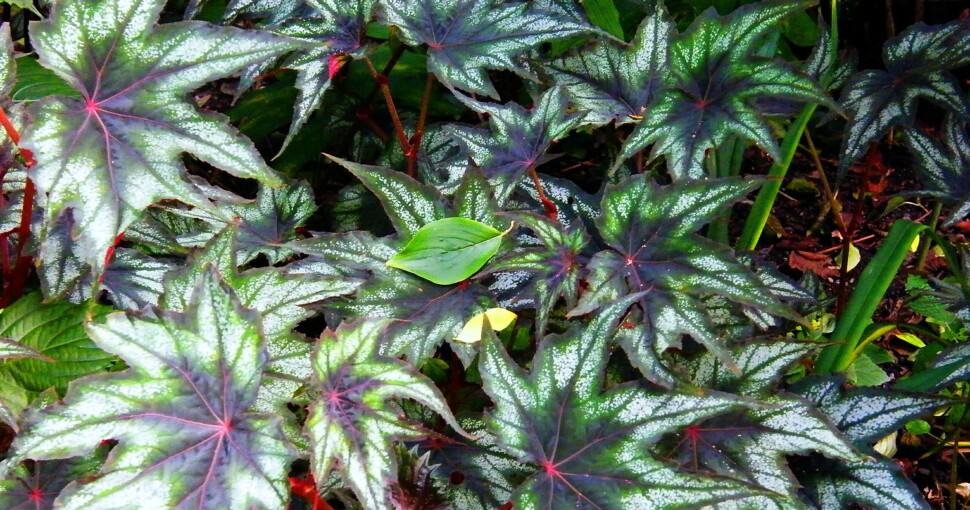Begonias are bright jewels in a garden. They have one of the tiniest seeds in the world. One ounce of begonia seeds contains three million seeds. These brilliantly colored flowers may be eaten, and they have a high vitamin C content.
Contents
Begonias are related to pumpkins, gourds, and squashes. There are many different types of begonia that vary considerably. Some may be bedding plants (wax begonias), others are terrestrial shrubs, and others may be epiphytic (grow on trees).
Begonia leaves vary in size and shape. They can be green, red and green, variegated, or have prominent markings following the midrib and leaf vein pathways.
Begonia flowers are notable for their bright colors in almost every possible hue. The flowers are often rosette shaped with multiple layers of petals. Other begonias have saucer or cup shapes with only one layer of petals.
Many plants have a resemblance to begonias. Also read: Are Begonias Poisonous?.
- Pelargoniums
- Camellias
- Impatiens
- Portulaca
- Gazania
- Persian buttercup
- Banksia rose
- Bougainvillea
1. Pelargoniums
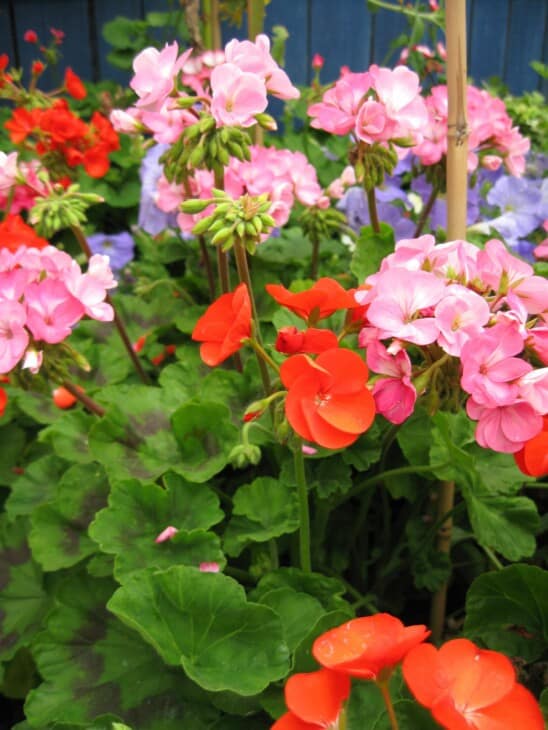
Pelargoniums are very popular garden plants. They grow as small shrubs or bushes and are indigenous to southern Africa. There are various types of pelargonium. Some may have a trailing habit and others grow upright.
Pelargonium leaves are rounded and lobed with undulating margins. The precise leaf shape and appearance vary with the species.
Some trailing pelargoniums may have thick fleshy leaves. Generally, the leaves are bright green, but some may be darker shades. Pelargoniums may also have variegated leaves with some very unusual markings and coloring.
Pelargonium flowers, like begonias, come in a wide array of colors. They may be pink, purple, red, yellow, white or have multiple colors on one blossom. The flowers can have one layer of petals or multiple layers.
Pelargoniums are often scented and add an extra dimension to the gardening experience with their pleasant fragrance. They need well-drained fertile soil to thrive. Pelargoniums can grow in full sun, but in hot climates will need some shade during the afternoon.
2. Camellias
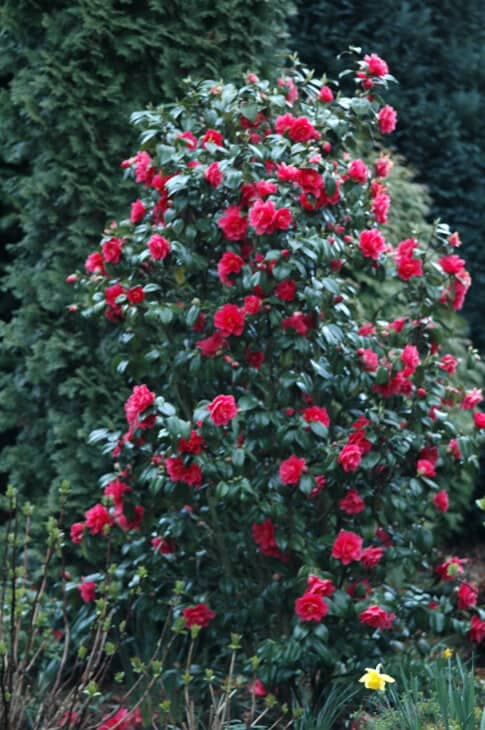
Camellias are evergreen shrubs that prefer to grow in shaded areas of the garden, protected from the wind. Their leaves are dark glossy green ovals.
Camellias produce vivid-colored flowers like begonias. Camellia flowers may be double, semi-double, or single – this refers to the number of rows of petals. The flowers are large and fragile. They are easily damaged by wind and rain so it is advisable to plant camellias in a protected area.
Camellias are a favorite because they flower in autumn, winter, and early spring. They can provide color in the garden during the months when begonias and other plants are not flowering.
Related: 9 Plants similar to Camellia
3. Impatiens
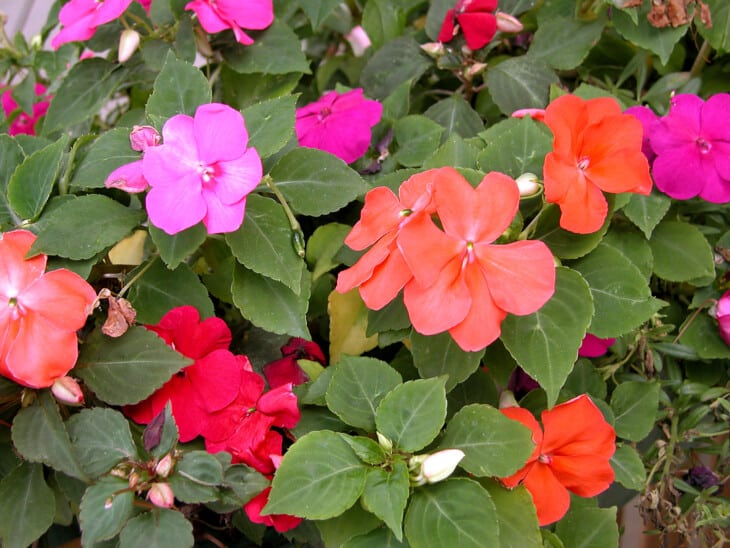
Impatiens belong to the Balsaminaceae family. They may also be called jewelweeds, snapweeds, busy Lizzies, and touch-me-nots.
Impatiens vary according to the species, but most are herbaceous perennials or annuals. They have thick fleshy stems similar to succulents. They can grow from one to two inches to large shrubs several feet tall.
The leaves of impatiens may be thin or thick and fleshy. The leaves vary in color, but most have a silvery sheen that arises from air bubbles trapped under the leaf surface. The leaves are usually unlobed and may have serrated margins.
Impatiens have brightly colored flowers like begonias. They may be blue, red, pink, white, yellow, orange, or purple. The flowers in bedding impatiens have one layer of petals and are shaped like a saucer or cup.
Impatiens grow best in cool shaded areas where the soil is moist and fertile. Their ability to grow in the shade makes them popular with gardeners. These cheerful plants are a good alternative to begonias.
Related: 8 Plants That Look Like Impatiens
4. Portulaca
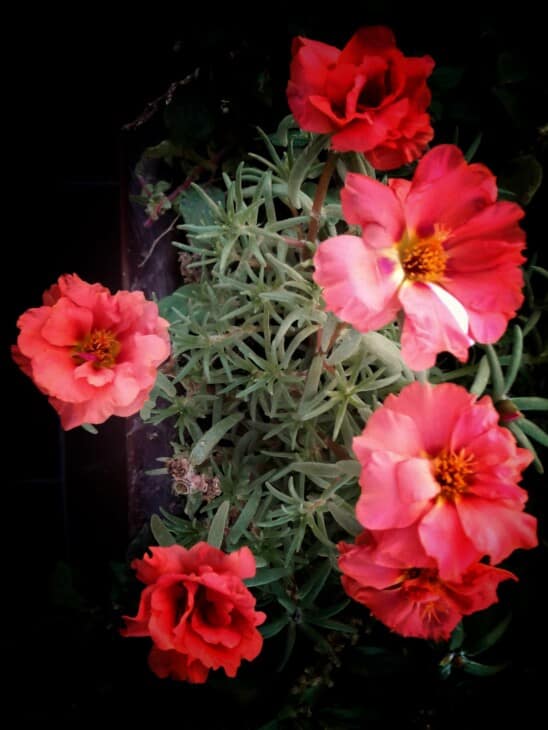
Portulacas are mostly used by gardeners as ground covers as they are low-growing. They have thin tubular leaves that are fleshy and similar to succulents. The leaf color varies from green to silvery green or blue-green.
Portulacas produce crowds of soft flowers in bright colors, similar to begonias. The flowers can be white, red, yellow, violet, orange, apricot, or pink. The flowers may be double or single and appear during summer. They are generally long-lasting blossoms, and portulacas bloom for the entire summer.
Portulacas are heat resistant and grow in full sun in sandy or fertile, well-drained soil. They need to be watered in very hot, dry weather.
5. Gazanias
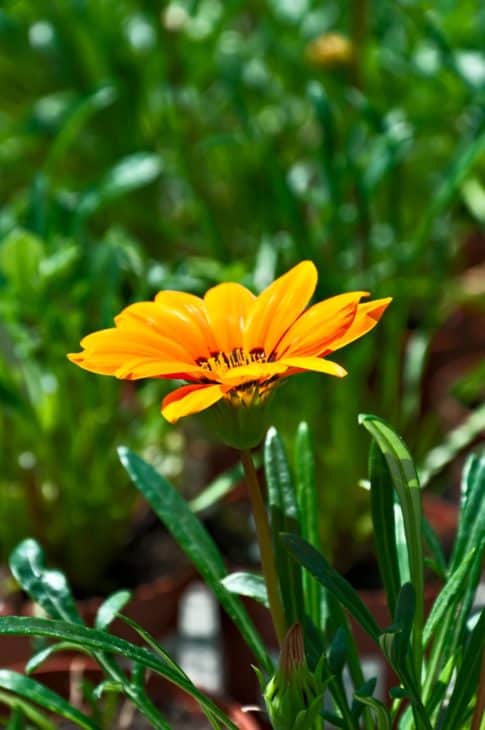
Gazanias are indigenous to southern Africa. They are low-growing perennials that form clumps. There are many varieties of gazania, and their leaves differ accordingly. The leaves may be green, grey-green, or yellow and green.
Gazanias produce copious amounts of brightly colored flowers, similar to begonias. The flowers may be single or double and but they are always large. They can be yellow, orange, red, pink, or bronze, often with dark centers.
Gazanias flower in spring, summer, and autumn, putting on a show of colors for most of the year. They are not suited to areas that have frosty winters. Gazanias grow in full sun and need minimal amounts of water. This makes them easy plants to care for and good alternatives to begonias.
6. Persian Buttercup
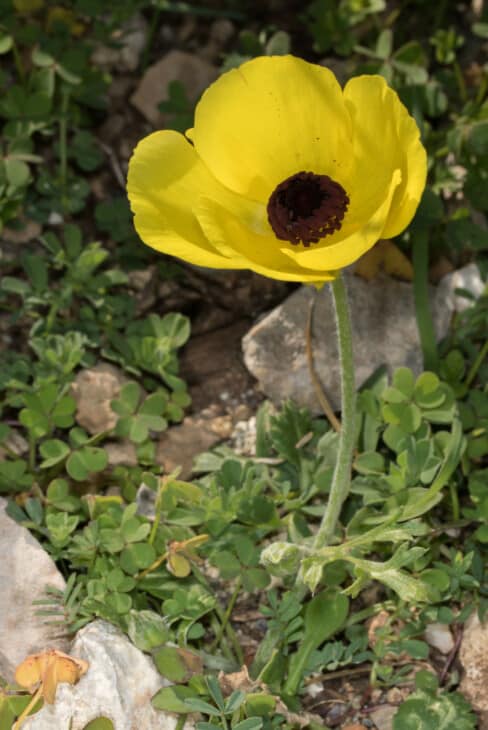
Persian buttercups (Ranunculus asiaticus) are native to northeast Africa, southwest Asia, and regions around the Mediterranean. They are herbaceous perennial plants that grow to approximately eighteen inches tall.
The leaves lower down the stem of the Persian buttercup have three lobes. The leaves higher up the stem have deeper divisions and are hairy.
The original Persian buttercup flower has only one row of petals. Hybrids have been developed with double flowers having several rows of petals. These hybrid Persian buttercups are remarkably similar to wax or bedding begonias.
Persian buttercup flowers can be yellow, cream, orange or varying shades of red. The flowers occur at the end of long flower stems and are one to two inches in diameter.
Persian buttercups do best in sunny positions protected from the wind. The blooms are easily damaged by gusty breezes. Good drainage and composting are essential for the plants to produce blossoms.
7. Banksia Rose
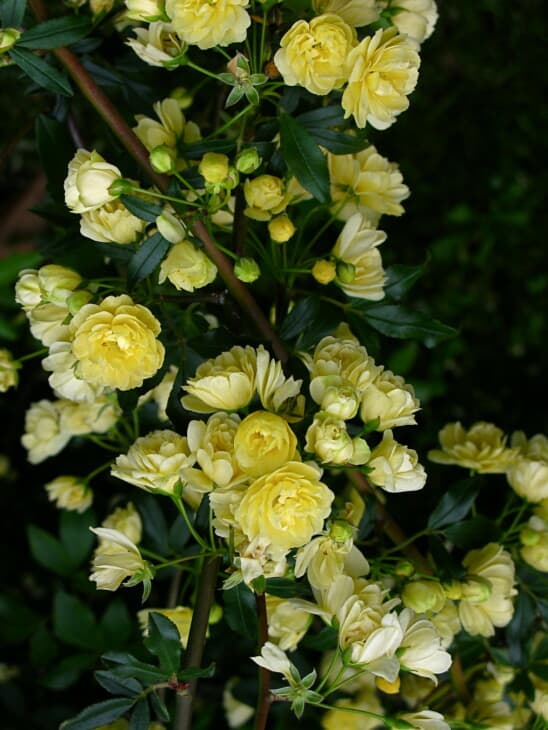
Banksia rose (Rosa banksiae) is sometimes called Lady Banks’ rose or Banks’rose. It is part of the Rosaceae (rose) family. It originated in China but has spread worldwide due to its popularity with gardeners.
Banksia rose grows as a shrubby vine that may grow to twenty feet tall. It has almost no thorns. Some plants may occasionally develop thorns on older shoots. It needs support and is best planted against a fence, wall, or trellis.
Banksia rose has evergreen leaves, one to two inches long. The leaves are compound with three to seven leaflets that have serrated margins.
Banksia rose is a prolific bloomer, producing clusters of blossoms that resemble a rose and begonias. The flowers are yellow, white, or cream. The plant blooms in spring and again in autumn, depending on the climatic conditions. Each flower is approximately one inch in diameter.
8. Bougainvillea
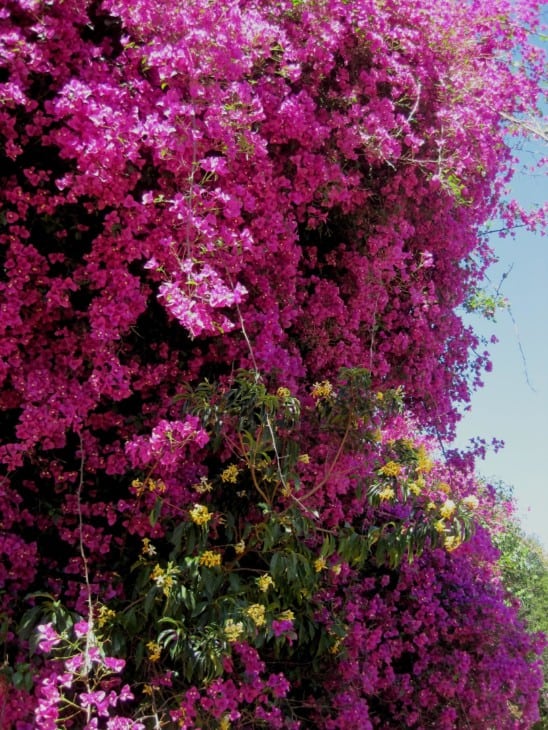
Bougainvillea belong to the Nyctaginaceae family. It grows as a thorny vine and, much like begonias, is popular with gardeners for its amazing colors. Bougainvillea plants can grow three to thirty-nine feet tall. They often grow by attaching themselves to trees, and gardeners may use them to cover a trellis or to grow up a wall.
Related: Are Bougainvillea Poisonous?
The oval leaves are one to five inches long. In climates that receive rain year-round, the plant is evergreen. In climates with frosty winters, bougainvilleas are deciduous.
The true flowers are tiny white, and waxy. They are surrounded by three brightly colored modified bracts. The bracts may be brilliant pink, purple, red, orange, copper, magenta, and yellow. The color and number of the bracts make them look like begonia flowers.
Bougainvillea is sensitive to frost and grows best in warm climates. It tolerates dry periods and has high salt tolerance making it a good plant for coastal gardens.

